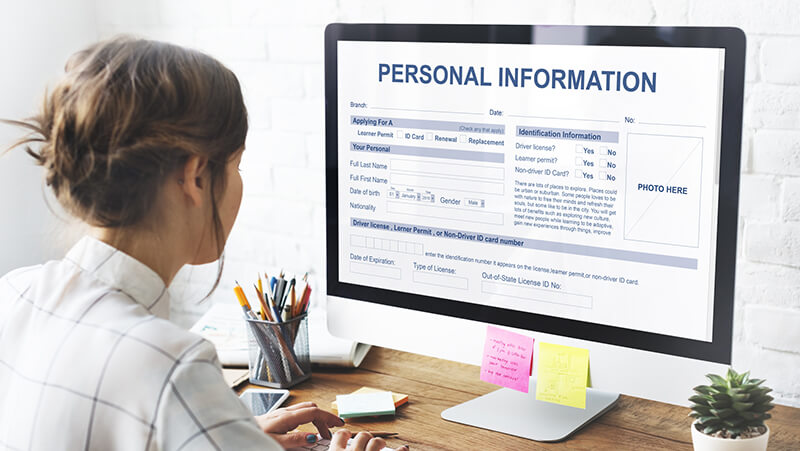An insider threat is a data breach security risk caused by people that have legitimate access to an organization’s data. Insider threats can be either unintentional or malicious. Insider threats are on the rise and are intensified by digital workspaces, flexible and remote work, and the agile behaviour of companies without strict policies.
What is Insider Threat?
An Insider threat is a malicious or unintentional threat to an organization that originates from internal operations or people who have access to an organization’s data, such as employees, contractors, or partners.
Insiders can cause harm to the organization’s security, data, systems, or reputation through their actions. Insider threats can include malicious actions like data theft, sabotage, or espionage. Data can get lost or stolen accidentally, too: employees getting credentials compromised by using public networks while working remotely, or sending data to individuals without authorization are just two examples.
No matter what type of data your organization manages – whether it involves the collection of personal information such as names, contact details, security numbers, card numbers, or customer databases – there is always an interested buyer. If data is compromised and an inside actor acquires it, it can be traded on the dark web or even directly to competitors.
Insider threat vs. insider risk: What’s the difference?
Terminology can vary slightly depending on context and individual perspectives, but the definitions widely accepted in the field of cybersecurity are:
Insider Threat: This refers to the potential harm or danger posed by individuals within an organization, such as employees, contractors, or partners, who may intentionally or unintentionally compromise the organization's security or data.
Insider Risk: This is a broader concept that includes both intentional and unintentional threats originating from insiders. It encompasses risks associated with human behaviour, negligence, ignorance, and other factors within an organization's security posture. Insider risk management focuses on identifying, assessing, and mitigating these risks, whether they are malicious or accidental.
Insider risk management involves identifying, assessing, and mitigating the various risks associated with insider actions, whether intentional or accidental, attempting to prevent them rather than waiting to clean up consequences after they occur. It includes a proactive approach to managing the potential harm that insiders can pose to an organization's security and operations.
We’ll discuss best practices and some effective ways that organizations can manage insider risk below.
At Safetica, we know that people make mistakes. All your data is safe with us, no matter whether you have a malicious insider or just regular humans who are not always perfect.
The cost of insider threat incidents
The overall costs of an insider threat incident increased from $11.45 million in 2020 to $16.2 in 2023 (Ponemon). Most of these threats are unintentional – 55% were caused by negligent insiders, whereas 25% were malicious.
If you think insider incidents can’t happen to you, think again: 71% of companies are experiencing between 20–40 incidents per year! Insider threats are on the rise due to digital workspaces and an increase in remote work. Insider-driven data loss occurred on BYOD endpoints (43%) only slightly more than on corporate-owned endpoints (41%). But he biggest culprit, at 59% of cases, is the cloud environment (59%) and IoT devices (56%).
How fast an organization detects and contains the incident matters greatly: On average, it takes nearly three months (86 days) to contain an insider threat incident. It costs an average of $179,209 to contain the consequences of an insider threat. The longer it takes to detect an internal threat, the higher the costs: Incidents that took more than 90 days to discover cost companies an average of $18.33 million; the average cost of incidents that were discovered in less than 30 days was $11.99 million.

10 Best practices for preventing insider threats
Keeping sensitive data secure requires a combination approach. Here are our top 10 tips on preventing data loss through insider threats:
1. Inventory and classify data resources
Begin your journey to prevent insider threats by taking stock of all your data resources and organizing them based on their significance. Here's why it matters:
- Visibility: You can't protect data you don't know about. Inventorying your data gives you a complete picture of what needs safeguarding.
- Prioritization: Not all data is equally critical. Classify resources to prioritize protection efforts on the most valuable assets.
- Access control: Knowing what data is where allows you to enforce precise access controls, limiting exposure to sensitive information.
- Efficient response: In the event of a threat, an organized inventory speeds up response efforts, minimizing potential damage.
- Compliance: Proper data management is often a regulatory requirement, and an inventory aids compliance efforts.
Tip: Safetica Compliance is a powerful extension to our enterprise-grade DLP solution, Safetica ONE. It will identify data protected under key regulations like GDPR, PCI DSS, HIPAA, and many others, and set up policies and data discovery tasks to help you comply with these regulations.
2. Behaviour analysis
Behaviour analysis detects insider threats before they become breaches. Behavioural analytics involves creating baselines of normal user behaviour and flagging any deviations that may indicate malicious intent or unauthorized activities.
Begin by establishing a baseline of normal behaviour for each user within your organization. This involves collecting data on their typical login times, devices used, locations, and the applications they access regularly.
The system will them monitor each user’s actions and when deviations occur, such as unusual login times, access to unfamiliar systems, or atypical data transfers, the system raises alerts for further investigation. For example, if an employee suddenly accesses a large number of sensitive files or attempts to exfiltrate data outside of regular working hours, it may indicate malicious intent.
3. Zero Trust Model
Embrace the Zero Trust security model, where trust is not assumed, even for insiders. This approach mandates continuous verification and rigorous access controls:
- Trust is earned, not given, regardless of whether someone is an employee or an insider.
- Regularly confirm identities and privileges to ensure ongoing trustworthiness.
- Limit access to only what's necessary, minimizing the risk of insider threats.
4. Data Encryption and Two-Factor Authentication
Two fundamental data security practices should be your gold standard: data encryption and two-factor authentication (2FA).
- Data encryption
Encryption is the process of converting data into a code to protect it from unauthorized access. By applying encryption to sensitive information, you safeguard it, even if an insider attempts unauthorized access.
Example 1: Email communication
Without encryption, emails that include sensitive data are vulnerable to interception or insider misuse. Email encryption ensures that even if an insider accesses these emails, the content remains unreadable without the decryption key.
Example 2: Database protection
Your company's databases house a wealth of critical information. Encrypting database data ensures that if an insider breaches the system, they won't gain access to sensitive data without the encryption key.
- Two-factor authentication
2FA adds an additional layer of security beyond traditional username and password authentication. It requires users to provide two forms of identification before granting access, significantly reducing the risk of unauthorized access.
Example 1: Login to work accounts
When employees log in to their work accounts, they not only enter their password (first factor) but also receive a one-time code on their mobile device (second factor). Even if an insider knows an employee's password, they won't be able to access the account without the unique, time-sensitive code.
Example 2: Access to sensitive systems
For access to critical systems or sensitive data, require 2FA. This means that even if an insider somehow acquires a colleague's login credentials, they would still need the secondary authentication method, such as a fingerprint or security token, to gain access.
5. Creating a Robust Security Policy
Creating a strong security policy is at the core of safeguarding your organization against insider threats. Ensure your security policies are crystal clear and straightforward. Complexity can lead to confusion, indifference, or non-compliance among employees. You can use ISO 27001 as your guiding light in setting up your organization with an effective information security management system.
Practical example: A clear password policy could specify requirements like "Passwords must be at least 12 characters long, include both uppercase and lowercase letters, and be changed every 90 days." This straightforward guideline leaves no room for misinterpretation.
Tips for an effective security policy that prevents data loss:
- Involve relevant departments to create a policy aligned with the organization's needs and regulations.
- Keep the policy current to address evolving threats and technologies.
- Use clear, non-technical language for accessibility.
- Tailor sections for different job roles.
- Include real-life scenarios to illustrate policy principles.
- Outline clear steps for reporting and responding to security incidents.
- Notify employees of policy updates and changes.
- Define repercussions for policy violations.
- Ensure easy access to the policy for all employees.
- Conduct security drills to assess policy implementation.
6. Educate your employees
Having a security policy in place is just the beginning. To take your security policy from theory into practice, it's imperative to educate your employees effectively. Here's how you can do it:
- Motivation through understanding: Inspire your team to safeguard your data by offering relatable, easily digestible training sessions and reminders.
- Awareness of sensitive data: Ensure your employees understand what data is considered sensitive, how it can be exploited, and their pivotal role in its protection.
- Let the boss do the talking. If management is involved in training, everyone will take it more seriously. The CEO doesn’t need to do a whole presentation, but if they show their involvement in the cause, it’ll be much better received.
- KISS! Keep it short and simple. Try to give employees as much information as you can in the shortest amount of time. Bonus points for making it fun.
For more tips on educating your employees about data security, hop on over to our detailed article: How to educate your employees about data security.
7. Secure collaboration tools
Effective collaboration is essential in the modern workplace, but it also introduces potential insider threat risks. To mitigate these risks, you need to make educated choices about the types of collaboration and communication tools your employees use. These tools should incorporate encryption and access controls to protect sensitive data from unauthorized access and leaks.
Secure collaboration tools should encrypt data both in transit and at rest. This means that even if an insider gains access to communication channels or stored files, the content remains unreadable without the decryption keys.
Implement strict access controls to limit who can view, edit, or share sensitive information within collaboration platforms. This ensures that only authorized individuals can access critical data.
8. Endpoint detection
Endpoints, in the context of cybersecurity, refer to individual devices like computers, laptops, and mobile devices that connect to your organization's network. These endpoints are often the entry points for insider threats.
Why endpoints matter: Endpoints are where employees interact with data and systems, making them prime targets for insiders seeking to access, steal, or manipulate sensitive information. Protecting endpoints is critical because they are often the first line of defence against insider threats.
DLP solutions with robust endpoint protection continuously monitor endpoints for unusual behaviour, such as unauthorized access attempts, file modifications, or data transfers. When anomalies are detected, they trigger alerts and responses, which may include isolating the endpoint, blocking malicious processes, or alerting security teams.
Did you know? Safetica's Compliance Module identifies and classifies sensitive data on endpoints, enhancing visibility into data handling processes, and facilitating the setup of data loss prevention policies.
9. Screen new hires and departing employees
Your organization's security starts with its people. To protect against insider threats, consider the following:
- Vigilant hiring process: Begin by conducting thorough background checks on new hires. Ensure they are trustworthy and understand your organization's data security policies.
- Secure off-boarding: When employees leave, institute a secure off-boarding process. This includes revoking access rights promptly and ensuring they do not depart with sensitive data.
- Monitor compromised employees: If you suspect any employees may be compromised or pose a security risk, closely monitor their activities. Assess their access to data and limit it to only what is necessary for their role.
10. Implement data loss prevention software
While each step mentioned can enhance your data security, a robust data loss prevention software solution can be as your most potent ally. Here's why:
- All-in-one defence system: DLP software offers a holistic approach to data security, shielding your data from various threats, including insider risks. It covers data protection, access controls, and threat detection and real-time monitoring.
- Minimal workflow disruption: DLP software operates seamlessly in the background. It will not interrupt the daily workflow or lower the productivity of your employees in any way.
- Labeling: With tools like Safetica’s, you can label sensitive data based on context, enabling precise monitoring and control over how employees access and interact with critical information.
- Customized security policies: Tailor security policies to your organization's unique needs. This includes blocking specific file operations, capturing data, controlling email domains, restricting external device usage, and preventing unauthorized data uploads to the cloud.
- Easy implementation: Safetica simplifies the implementation and integration of DLP software, ensuring a smooth and efficient setup process.
Tip: If you are interested in trying Safetica’s DLP software and understanding what it can do for your company, book a free demo. One of our account managers will show you the ropes and answer any questions you have. Here’s what you can expect from a demo call.

Reacting to incidents caused by insiders
If your company is facing an insider-initiated data breach, follow these key steps:
- Form an incident response team: Assemble experts in IT, security, HR, and legal to coordinate the investigation.
- Document & preserve: Record incident details and preserve evidence such as date and time of the breach, the affected systems or data, and any potential vulnerabilities that were exploited, by keeping logs, emails, chat transcripts, or physical evidence.
- Conduct an analysis: Forensic experts, if necessary, can perform a detailed analysis of the breach. They can help identify the scope of the incident, the methods used, and any data that may have been compromised.
- Interviews & logs: Interview involved parties, including the suspected insider, witnesses, and any affected employees, and review access logs. This step can help determine how the breach occurred and who was responsible.
- Impact assessment: Evaluate the breach's impact on your organization – what data was lost, financial implications, and reputational damage.
- Notify affected parties: Notify regulatory authorities, affected customers, or partners. Be sure to adhere to data laws and regulations.
- Take remedial actions: Address any vulnerabilities or weaknesses identified during the investigation process. Update security policies, patch systems, and enhance employee training as needed.
- Employee education: Inform employees about the incident without disclosing sensitive details. Emphasize the importance of reporting suspicious activities and remind employees of security policies and best practices. Educating employees periodically is imperative in insider threat prevention.
- Continuous monitoring: Implement ongoing monitoring and auditing processes to detect and prevent future insider threats. Consider using data loss prevention solutions to monitor and protect your company’s sensitive data. A robust DLP software will include insider threat protection.
- Legal & HR actions: Take necessary legal and HR actions. These may include disciplinary measures, termination, or legal proceedings.
Real Examples of Insider Threat Incidents
#1 Tesla
Electric car giant Tesla suffered a major data breach in 2023 when 2 former employees leaked sensitive personal data of over 75,000 Tesla employees, as well as production secrets, bank transactions, and complaints filed with Tesla to a German news media.
Luckily, the German media refused to use the information due to GDPR restrictions, but Tesla can’t deny that its reputation took a hit. It has started legal action against the two employees, has filed lawsuits to get access to their electronic devices where the stolen data is believed to be stored, and obtained court orders preventing the malicious ex-employees from further accessing and using the stolen data.
#2 Microsoft
Microsoft experienced a very close call in 2022 when employees accidently exposed some very important login credentials on GitHub. The data could’ve given malicious actors access to Microsoft’s Azure servers (a cloud computing service) and other internal systems, potentially causing a huge data leak. Luckily, Microsoft were alerted to the credentials being visible by a reputable data security firm and the situation was resolved before any real harm was done. Microsoft are taking steps to prevent similar situations from happening in the future.
#3 Ubiquiti
Ubiquiti is one of the top worldwide producers of wireless communication devices. The company had a malicious insider among its employees. Nickolas Sharp stole gigabytes of company data and tried to ransom his employer.
Nickolas Sharp used his cloud administrator credentials to clone and steal confidential data. He tried to hide his activity and changed log retention policies so his identity would remain unknown. When he obtained the data, he demanded almost $2 million from Ubiquiti in exchange for the return of the files. However, the company refused to pay, found him and changed all of the employees’ credentials.
In January 2021, Ubiquiti issued a data breach notification, and Nickolas Sharp was arrested for data theft and extortion.
#4 Coca-Cola
In 2018, The Coca-Cola Company announced a data breach. A former employee was found to have an external hard drive that contained information stolen from Coca-Cola.
"We are issuing data breach notices to about 8,000 individuals whose personal information was included in computer files that a former employee took with him when he left the company," a Coca-Cola spokesperson told Bleeping Computer.
#5 Trend Micro
In 2019, Trend Micro experienced a leak of personal data caused by a malicious insider. The company learned that some of their customers were getting scam calls claiming to be Trend Micro support.
An investigation was launched right away, and it confirmed that it was an insider threat. An employee got access to a customer support database with names, email addresses, Trend Micro support ticket numbers and telephone numbers. The employee sold the sensitive data to a third-party malicious actor.
The employee was fired immediately, and customers were advised not to react to the scam calls.

How Safetica can help you with insider threats in your organization
Insider threats are on the rise due to various “new normal” ways of working. Protect your data by adopting appropriate measures that will help you to keep your sensitive information safe. Your greatest data security asset is the right DLP software. Find one that combines all the important features and protects your critical data as well as your employees.
Remember that if people feel safe, your company’s data will be safe too.
Safetica offers a solution that helps you keep your data safe – from the initial (and continuous) discovery of sensitive or other business-critical data in your digital workspace through the efficient dynamic data leak and insider threat protection to easy integration with other tools and into multi-domain enterprise environment.
Finally, Safetica is super easy to implement and integrate. And this isn't just our opinion, but our customers think the same! We consistently receive badges from G2 and other peer review platforms, where customers provide feedback about the software they use.
Let's discuss your organization's data security

